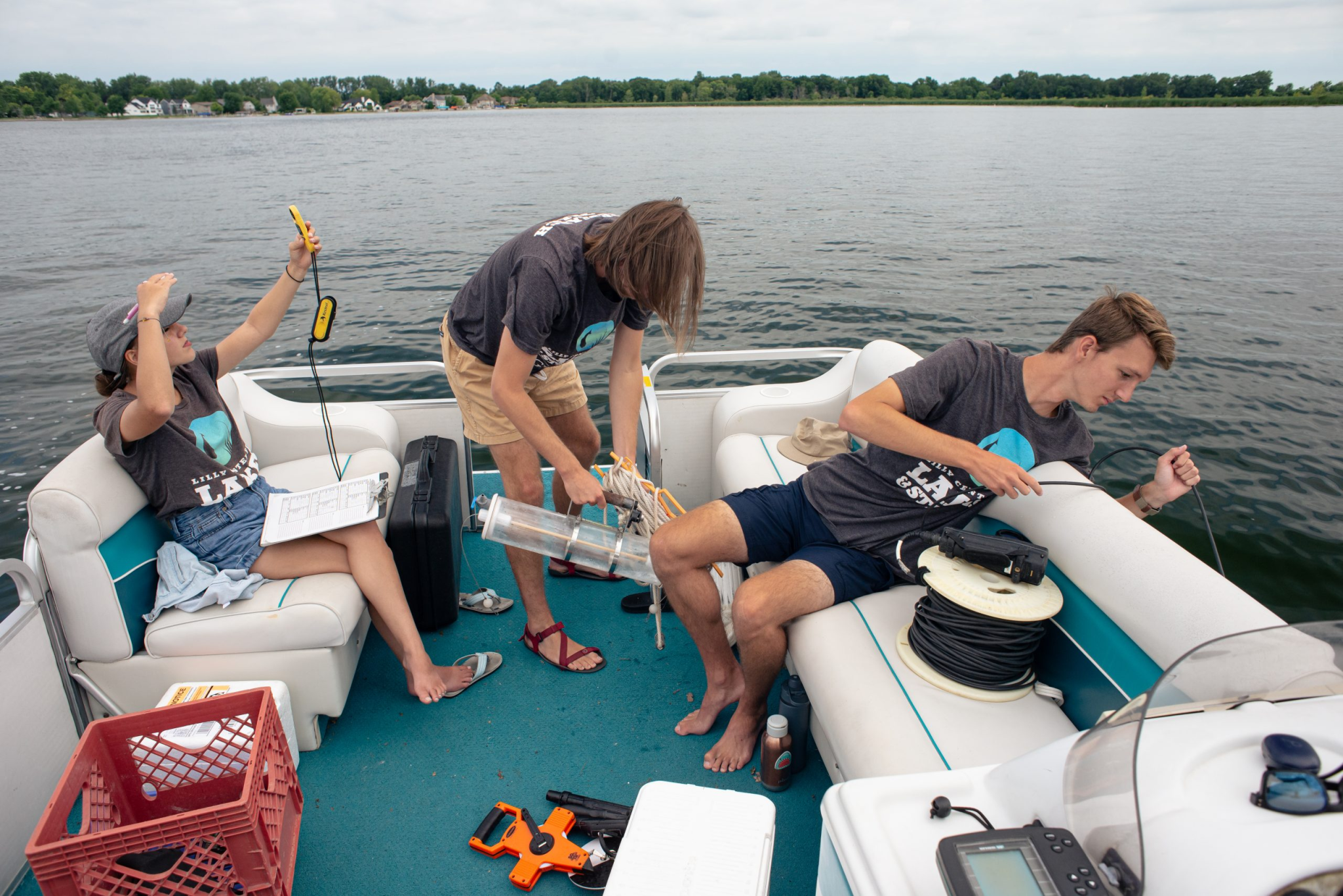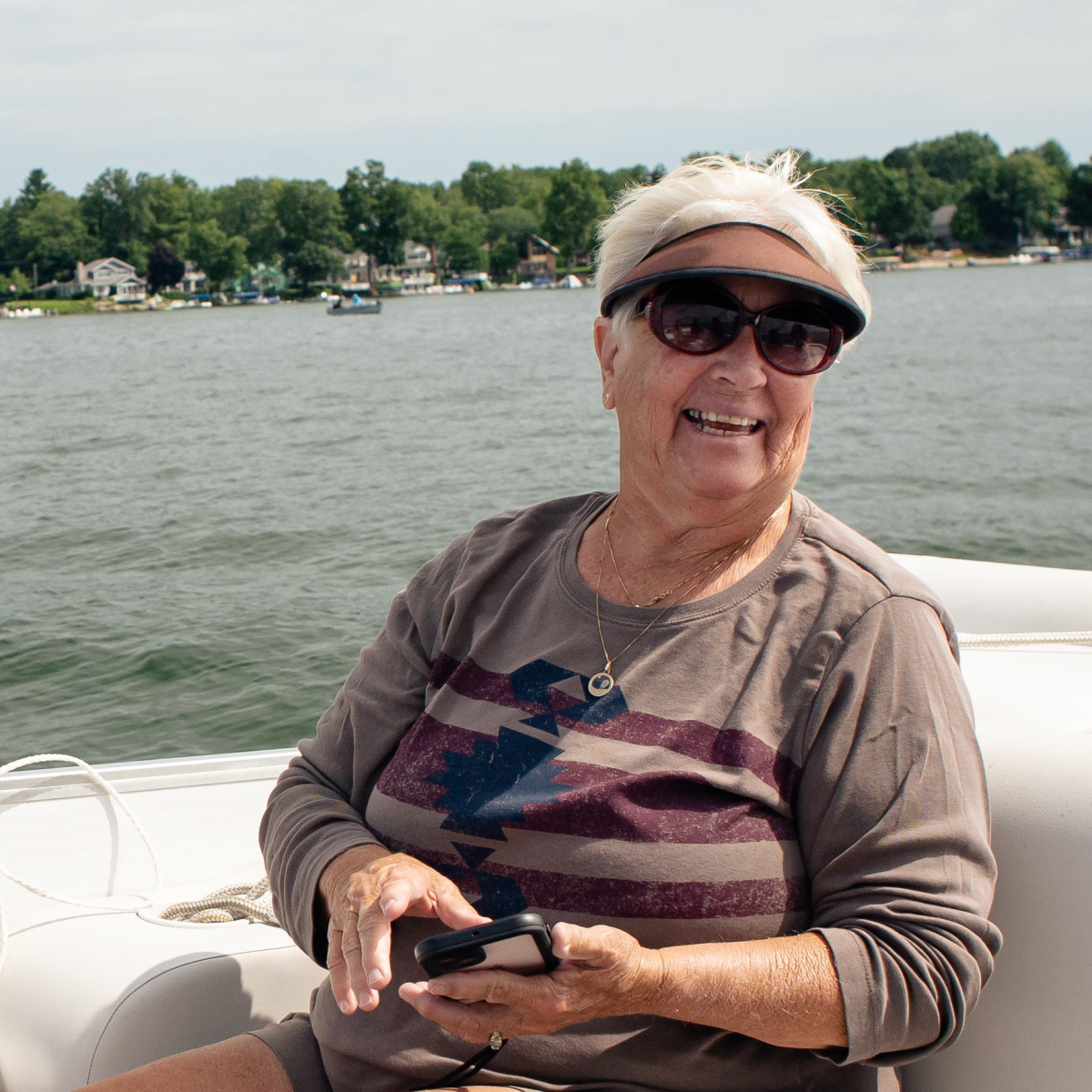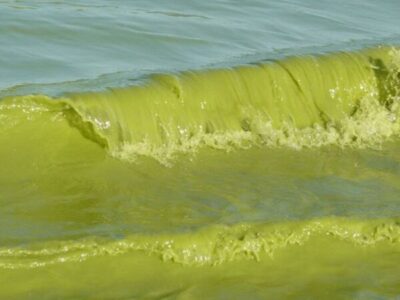
This article, first posted here, was republished with permission from Wisconsin Watch.
By Eva Tesfaye, Harvest Public Media
This story is a product of the Mississippi River Basin Ag & Water Desk, an editorially independent reporting network based at the University of Missouri School of Journalism in partnership with Report For America and funded by the Walton Family Foundation. Wisconsin Watch is a member of the network. Sign up for our newsletter and donate to support our fact-checked journalism.
Living on Lake Wawasee in northern Indiana, Cindy Peterson remembers it was once a sparkling clean lake.
“In the spring, you can see the bottom. It’s perfectly clear, very few weeds, beautiful,” she said. “And now we’re seeing more and more of the weeds, the algae blooms. ”
She worries about whether her grandchildren will be able to enjoy the lake as they get older. That’s why she offers her pontoon boat to researchers from the Lilly Center for Lakes and Streams at Grace College. The student employees head out on the lake weekly during the summer to test for harmful algae blooms and the conditions that produce them.
“It’s going to become a dead lake if we don’t maintain it. And that’s what they’re doing with all this testing,” Peterson said.
The Lilly Center’s partnership between local residents and environmental groups is unique — but it’s becoming more necessary as climate change increases toxic algae blooms with the combination of rising water temperatures and more rain causing fertilizer run-off from fields.
Blue-green algae can cause respiratory and gastrointestinal issues in those who are exposed to it. Some toxins such as microcystin and cylindrospermopsin can cause liver and kidney damage. Federal health officials reported that in 2019 across 14 states, 63 people were sickened and 207 animals died after toxic algae exposure.
The only way to know if a bloom is toxic is to test, and sometimes toxins can even be present without a visible algae bloom. Yet many states are not routinely testing their lakes before people or pets get in the water.
Due to funding and staff restrictions, the Indiana Department of Environmental Management or IDEM can only test a small number of Indiana’s lakes. The Lilly Center takes over in Kosciusko County, home to Lake Wawasee and the most lakes overall in the state — too many for IDEM to test.
In the last two years, the Lilly Center also started sharing its testing information in a newsletter so visitors and residents can recreate safely, which is helpful because the results of the testing vary greatly each year. Last year, toxin levels in many of the lakes were consistently above the level that is considered safe for dogs. This year the lakes haven’t had many toxins at all.
Having people like Cindy Peterson who want to see their home lakes healthy is a large part of what makes an effort like this work, according to Jed Harvey, a research technician who runs the testing program. The other pieces are staff, labs and the money to pay for all of it.

Cindy Peterson wants to make sure her grandchildren grow up with a safe lake to swim in. Credit: Scott Perkins for Harvest Public Media
“Science is tricky because you often have to follow the money, know where it’s coming from to see what gets done,” said Harvey. “But we are really blessed to have a lot of people around here who really care about the lakes.”
The Lilly Center for Lakes and Streams is entirely funded by donors. It gets its name from Indiana-based pharmaceutical company Eli Lilly and the Lilly family, who have made significant donations through the Ruth Lilly Philanthropic Foundation. Much of the funding also comes from well-off residents of Lake Wawasee, where massive homes and expensive boats are scattered across the lakefront.
Donations from the residents enabled the Lilly Center to design a buoy for Lake Wawasee that cost tens of thousands of dollars. It collects essential algae data in real time. Most lakes don’t get nearly the same level of monitoring.
“We are aware that we will end up doing more on this lake than on other lakes,” said Harvey.
A patchwork of state algae testing
Across the Midwest, state algae testing programs are often limited — such as the Indiana Department of Environmental Management’s — which only has the resources to cover 18 lakes.
“We have a very specific goal of protecting public health at swimming beaches and that’s how we kind of keep this program on a smaller scale than just sampling all lakes in Indiana,” said Kristen Arnold, the chief of IDEM’s watershed assessment planning branch. “That would be impossible, so we have a very narrow focus of our project.”

Lilly Center for Lakes and Streams research technician Jed Harvey puts a new probe on s buoy that collects real-time data to study toxic algae in Lake Wawasee. The Lilly Center is located at Grace College. (Scott Perkins for Harvest Public Media)
When they do test, agencies look for toxins such as microcystin, cylindrospermopsin, saxitoxin, anatoxin-a and nodularin. Many other states — including Wisconsin — test only when there has been a report of an algae bloom or someone has fallen ill.
A 2021 Environmental Working Group (EWG) report identified 39 news reports written about an algae outbreak in Wisconsin in the previous decade. But 29 of those locations were not tested by the state for microcystin, the nonprofit research and advocacy group found.
In Missouri, officials at the Department of Natural Resources said they also face limitations from staff and funding. They also only focus on lakes managed by public agencies, making for inconsistent testing statewide.
“If an individual had something going on at their local lake or if a city or community has an issue with their lake, we don’t necessarily have the ability to accept a sample from them now,” said Lynn Milberg, director of the department’s Environmental Services Program.
Catch more news at Great Lakes Now:
Farms in Six Southeast Michigan Counties Are Major Sources of Lake Erie Toxic Blooms
Mapping the HABs: Click to see your state’s reports
Featured image: Student employees of the Lilly Center test for toxic algae on Lake Wawasee, the largest natural lake within Indiana. (Scott Perkins for Harvest Public Media)




